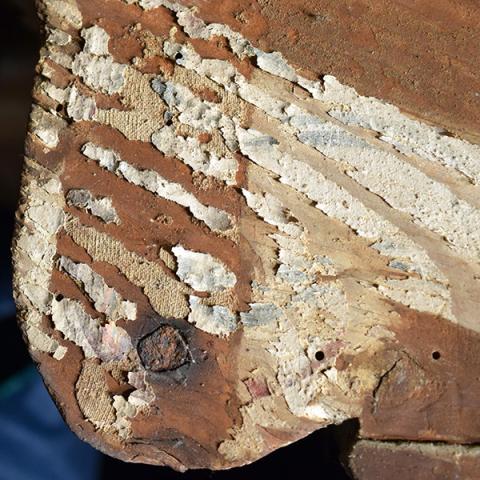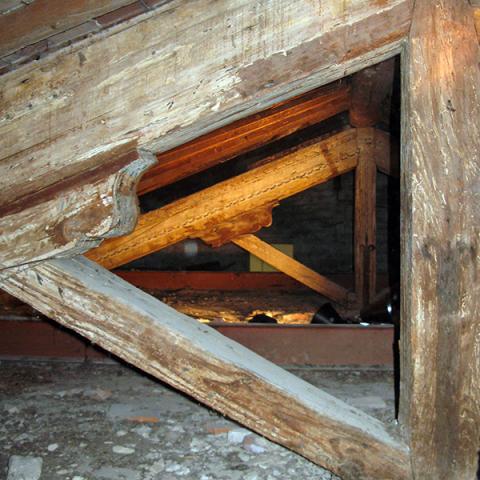marco.togni_1821
Marco Togni
Incamottatura su strutture lignee
L'articolo presenta uno studio multidisciplinare sull'incamottatura, scoperta come applicazione estensiva su strutture portanti lignee del sottotetto di Villa Rucellai a Quaracchi (Firenze). Tale tecnica, solitamente impiegata in dipinti su tavola e sculture lignee con l'intento di migliorare le caratteristiche del supporto della parte pittorica, non risulta essere mai stata descritta né citata in alcun testo antecedente questo studio nell’applicazione strutturale. La maggior parte dell'incamottatura, con le relative decorazioni pittoriche, è andata perduta nel corso degli oltre 500 anni di vita del tetto. Tuttavia il materiale ancora in opera consente di intuire l'alto livello di qualità della resa pittorica che l'utilizzo dell’incamottatura ha consentito all'epoca della realizzazione.
“Incamottatura” on timber structures
The paper describes a multidisciplinary investigations of the marouflage, discovered as an extensive application on wooden load-bearing structures under the roof of Villa Rucellai in Quaracchi (Florence). This practice, typically used on panel paintings and wooden sculptures with the aim to improve the surface characteristics of the support which takes the painting, has never been described or stated in any text before this study in its application on a structural level. The most of the decorations have been lost during the roof life, over 500 years old. However the material still in use allows us to realize the high level of quality of the pictorial rendering, at the time of construction, due to the use of the marouflage technique.

Villa Rucellai
Il patrimonio di beni culturali italiano è così vasto e diffuso sul territorio che si possono incontrare piccoli gioielli anche nei luoghi più reconditi e dimenticati.
Questo è il caso di studio di una piccola struttura portante lignea, parte di un edificio attribuito all'Alberti, realizzato da Giovanni Rucellai nel 1456 e per questo denominato Villa Rucellai. Benché citata da testi storici compreso lo Zibaldone Quaresimale, delle parti antiche di legno si conosceva ben poco.
L'articolo descrive la serie di indagini messe in atto allo scopo di ottenerne la conoscenza più ampia e approfondita possibile, propedeutica a eventuali lavori di recupero e restauro, e comunque indispensabile a conseguire la necessaria consapevolezza del bene storico–architettonico.
Villa Rucellai
The Italian cultural heritage is so widespread in the Nation that one can find small jewels even in the most hidden and forgotten place.
This is the case study of a small timber structure, part of a building ascribed to L. A. Alberti, built by Giovanni Rucellai in 1456 and for this reason called Villa Rucellai. Although mentioned by historical texts, including the Zibaldone Quaresimale, some ancient wooden parts were unknown.
The article describes the series of investigations carried out with the aim of achieving a wide and thorough knowledge, preparatory to a possible restoration, and essential for the awareness about historical-architectural good.

